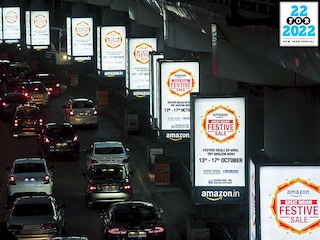Fintech innovation has laid the foundation for branchless banking: BharatPe's Su...
The unbanked and underserved cohort, small businesses and SMEs will be the biggest beneficiaries as digital payments gain traction, the CEO of BharatPe writes


The last few years have also witnessed the blossoming of new-age technologies that have not only transformed our daily lives, but also changed the way we go about doing business transactions. Advanced technologies like artificial intelligence/machine learning (AI/ML) have fuelled the adoption of fintech offerings. Banking and the way we do financial transactions have undergone a sea of change with the rise of digital payments, UPI (unified payments interface) becoming ubiquitous, and more and more consumers opting for accessing digital banking facilities.
The pandemic has also been a huge accelerator, taking digital payment adoption beyond Tier I cities, fuelling the growth of digital lending among businesses and consumers and enabling the increased usage of technologies like video KYC, DigiLocker etc.
The launch of innovative products and services has triggered a paradigm shift in traditional banking and has laid the foundation of branchless banking.
Interestingly, even as digital disruptions and innovations were gathering momentum over the last three-five years, the greatest disruptor of the past century, Covid-19, knocked at the doors. For digital banking, however, the black swan event turned out to be one of the biggest blessings in disguise. Digital services that may have taken half-a-dozen years to gain acceptance were embraced within weeks. This was because social distancing and other lockdown restrictions meant customers preferred to undertake financial transactions from their homes.
Meanwhile, as MSMEs (micro, small and medium enterprises) and other small businesses suffered due to lack of liquidity and other issues, fintech firms, in partnership with NBFCs, enabled loans at a time when traditional bankers remained reluctant to do so. Among the multiple financial offerings that have benefited people pan-India is the rise of UPI as a ubiquitous payment mode.
As per the National Payments Corporation of India (NPCI), UPI transactions crossed four billion in November, registering a value of ₹768,436 crore. Other digital payment channels from NPCI—such as Immediate Payment Service, Bharat Bill Payment System, Aadhaar-enabled Payment System (AePS) and National Electronic Toll Collection—all recorded month-on-month growth. For instance, from 279.8 million transactions in May, IMPS reached 303.7 million in June. Likewise, AePS, used for cash withdrawal at micro ATMs, domestic remittance and subsidy payouts, reached 87.5 million transactions from 84.2 million during the same period. UPI has emerged as one of the most preferred payment platforms in the country.
Not surprisingly, inadequate capital has been one of the prime hurdles in the growth of MSMEs. A 2019 International Finance Corporation-Intellecap report reveals that the MSME industry’s credit gap is pegged at approximately ₹16.66 lakh crore. In such a scenario, the ability to secure instant credit via digital modes has acted as a saviour for many MSMEs who have been conventionally denied loans. Loans, with the help from fintech firms and other new-age lenders, have given a lifeline to cash-starved small businesses during the pandemic.
UPI on credit could be the next big thing as banks and financial institutions can give out loans to millions. It can democratise credit like nothing else. I expect this to pick up in 2022 when regulations are developed and rolled out.
According to analysts, from barely a few million dollars in 2019, the nation’s annualised BNPL market size in gross transaction value has risen to about $1.5 to $2 billion within 18 months. In some measure, this has been supported by the behavioural changes among consumers after the coronavirus outbreak. Flipkart has been promoting these transactions through its subsidiary Flipkart Advanz, Amazon has tied up with an NBFC, Capital Float, while edtech majors Unacademy and Byju’s have joined hands with Capital Float and LazyPay, respectively. Private banks are also testing the waters in this area. Industry tracker Tracxn reveals that the 33 BNPL-centric startups in the country comprise a blend of new-age NBFCs as well as payment service providers operating as platform facilitators.
At BharatPe, we have disrupted the way BNPL works with PostPe. This is a first-of-its-kind BNPL product that is form-factor agnostic and has universal usage. A customer gets a credit line from an NBFC partner and can pay offline via a QR or a credit card, or pay online via the card. There is no need for the customer to look for a shop that offers BNPL. BharatPe’s BNPL product is available at more than 7.5 million merchant outlets.
The Reserve Bank of India has published two papers—on digital lending and on capping payment charges. The next few months will see a lot of traction in both these cases. We believe that merchant discount rates would come down even on card payments, and may ultimately become zero, as is the case with UPI.
I believe that fintech ventures will be the key drivers of building a cashless and digital India, one that runs on digital banking and has majority of its population in the formal banking ecosystem.
The writer is CEO, BharatPe
First Published: Jan 14, 2022, 12:19
Subscribe Now